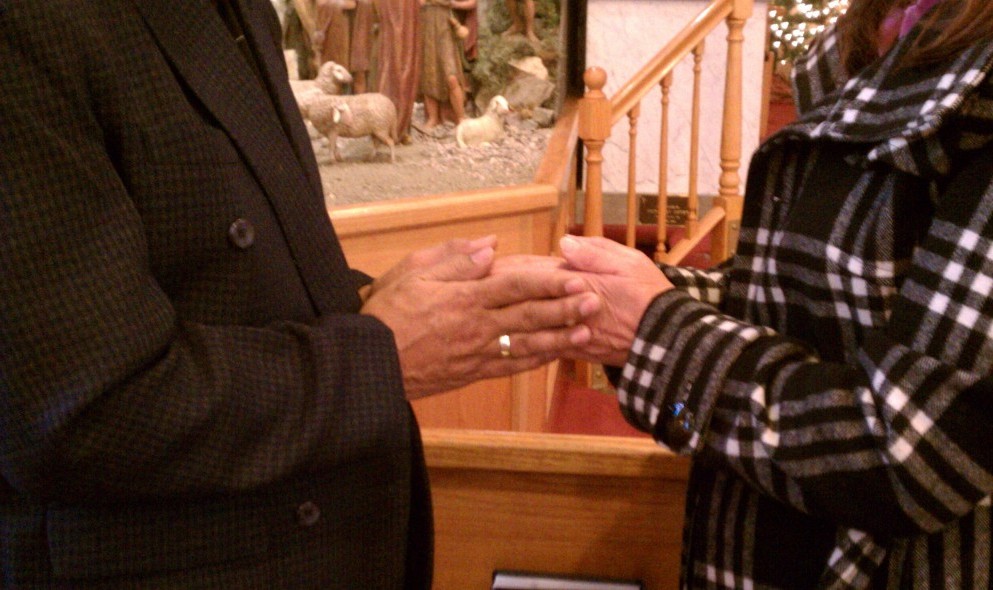I think the Maronite Catholic Church offers the most reverent approach. The priest kisses the altar (recall that the altar represents Christ), places his hands on the chalice, then passes God's peace to the deacon, who then gives it to the acolyte, who passes it to the first person in the pews, who passes it to the next person, and so on. Very rich indeed! The following is from a visitor who experienced it for the first time.

Passing On the Peace
About two weeks ago my family and I found ourselves in an unlikely setting: participating in the Divine Liturgy of the Maronite Catholic Church. Specifically, we were at St. Raymond’s Maronite Cathedral in St. Louis, Missouri.
I’ve attended a Divine Liturgy before (in the Syro-Malabar tradition), so it wasn’t that foreign to me. But I was delighted to experience the way in which the Maronites conduct the Sign of Peace: The person receiving the Sign of Peace puts their hands together at about chest level, as if in prayer. Then the person giving the Sign of Peace places their hands on the outside of the receivers hands.
It’s a surprisingly intimate gesture. Even more delightful, however, is that the congregation doesn’t just give the Sign of Peace will-nilly; the priest begins by giving the Sign of Peace to the ministers in the sanctuary, then (at this parish) to two ushers who have come up to the front of the church. The ushers go down the aisle, giving the sign to the persons sitting at the end of each pew, who then “pass it down” the pew from one person to the next.
The whole effect, at least from my vantage point in the back of the church, was to literally see Christ’s peace spread across the faithful gathered in prayer, from one person to the other. The fact that it began with one person also emphasized the unity of the congregation — this wasn’t just many people wishing peace to each other, but a single peace being passed from person to person.
When I remarked on the practice to my friend Fr. Zehnle, he said that he had heard of (but not experienced) similar practices in monastic communities in the Roman Church. I’d love to see the practice adopted in more parishes — I think it would help people understand, through gesture, the profound nature of our communal sharing in the peace of Christ.
If the opportunity presents itself, I would encourage you to attend the Divine Liturgy at a Maronite Church. It is the only Eastern church that has never been separated from Rome. The Maronites take great pride in this, often repeating the words of St Ambrose: "Where Peter is, there is the Church!"
Insofar as the reception of Holy Communion, here again the Maronite Church maintains its tradition of distributing communion by intinction and on the tongue. Both Popes Benedict XVI and Francis follow this same practice. Moreover, communion is distributed by a priest and, when present, a deacon. There are NO extraordinary ministers of Holy Communion in the Maronite Church.